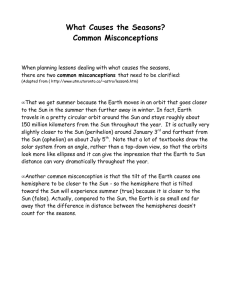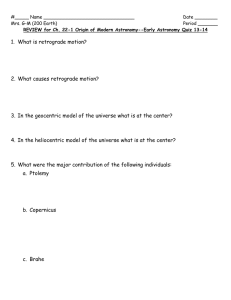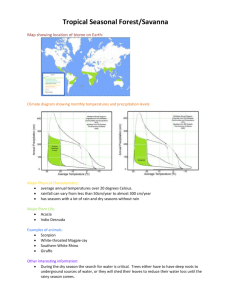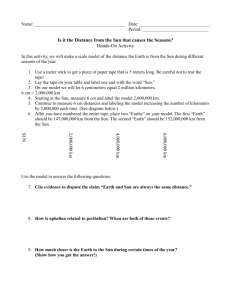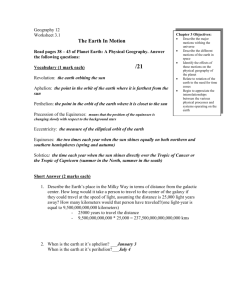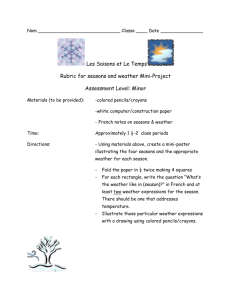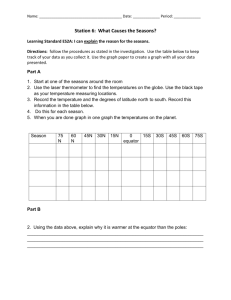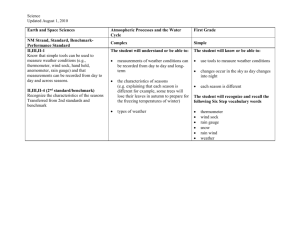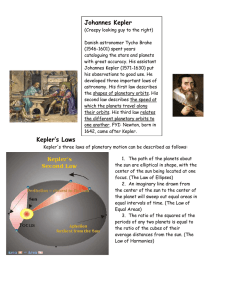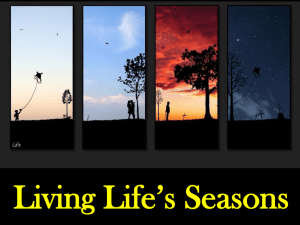REASONS 4 SEASONS
advertisement
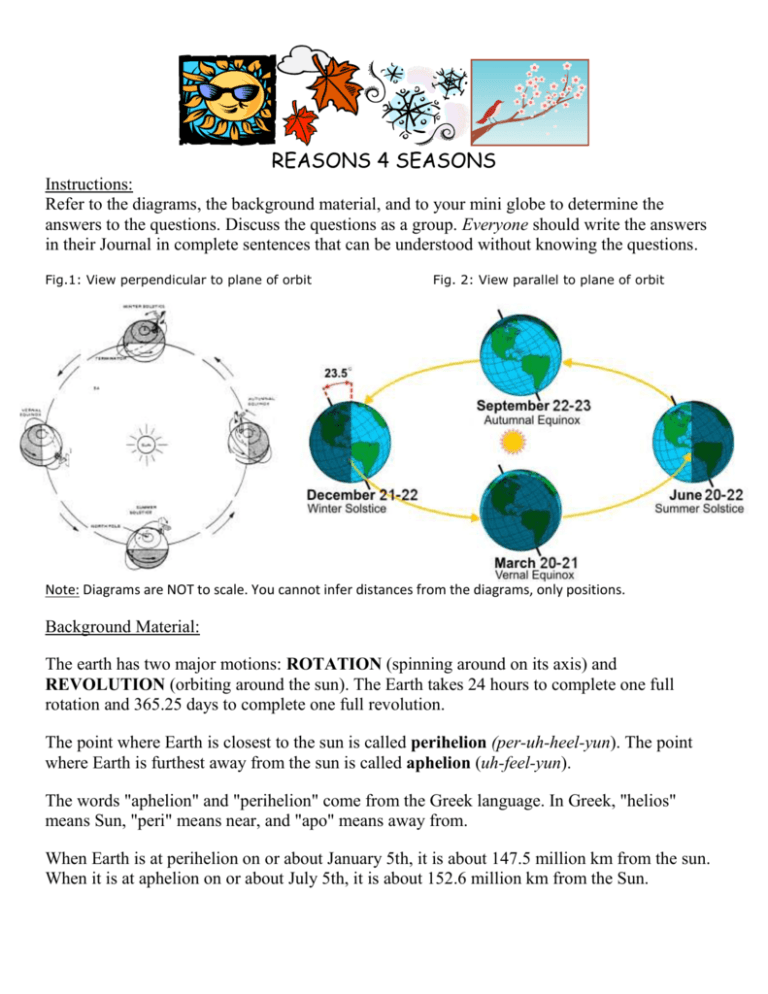
REASONS 4 SEASONS Instructions: Refer to the diagrams, the background material, and to your mini globe to determine the answers to the questions. Discuss the questions as a group. Everyone should write the answers in their Journal in complete sentences that can be understood without knowing the questions. Fig.1: View perpendicular to plane of orbit Fig. 2: View parallel to plane of orbit Note: Diagrams are NOT to scale. You cannot infer distances from the diagrams, only positions. Background Material: The earth has two major motions: ROTATION (spinning around on its axis) and REVOLUTION (orbiting around the sun). The Earth takes 24 hours to complete one full rotation and 365.25 days to complete one full revolution. The point where Earth is closest to the sun is called perihelion (per-uh-heel-yun). The point where Earth is furthest away from the sun is called aphelion (uh-feel-yun). The words "aphelion" and "perihelion" come from the Greek language. In Greek, "helios" means Sun, "peri" means near, and "apo" means away from. When Earth is at perihelion on or about January 5th, it is about 147.5 million km from the sun. When it is at aphelion on or about July 5th, it is about 152.6 million km from the Sun. TEAM LEADER’s DUTIES: Your job is to keep everyone on your team on task. You must work together to figure out the answers, but EVERYONE should write the answers in his/her Journal in complete sentences that can be understood without knowing the questions. Also, check that everyone in the group has written the title and today’s date in their Journal. Do not let people play with the materials and make sure everyone helps clean up at the end of class! You have 20 minutes to complete this task. Good luck! Questions: 1. What is the distance from Earth to the sun during January? 2. What is the distance from Earth to the sun during July? 3. Does the earth orbit around the sun in a perfect circle? Cite evidence to support your answer. 4. In which season is Earth closest to the sun and in which season is it farthest? Does this surprise you, and if so, why? 5. When I visited Namibia last July and August, it was winter there. What season was it here in New Jersey? Infer which hemisphere Namibia is located in. Check the globe to see if you are correct. Write a sentence that describes the difference between the seasons in the northern and southern hemispheres. Do not write about reasons yet! 6. What is it like near the Earth’s Equator no matter what time of year? Do people who live near the Equator experience the four seasons? 7. Many people mistakenly think that the seasons we experience on Earth are due to changes in the Earth’s distance from the sun. Explain why this cannot be true. Cite evidence to support your answer.
